Featured Artist
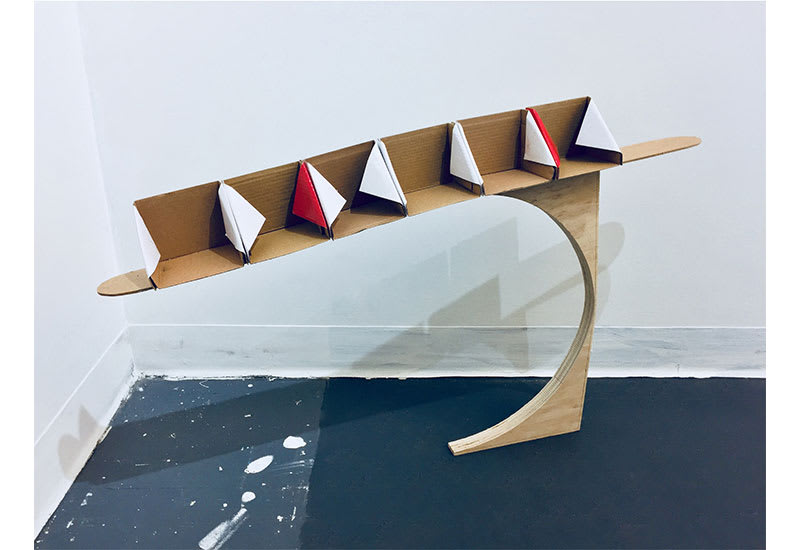
The widow's lot, Used cardboard photo frame corners, 2018. found mirror backing and scrap wood. 32 1/8 X 21 2/8 X 31/8 inches.
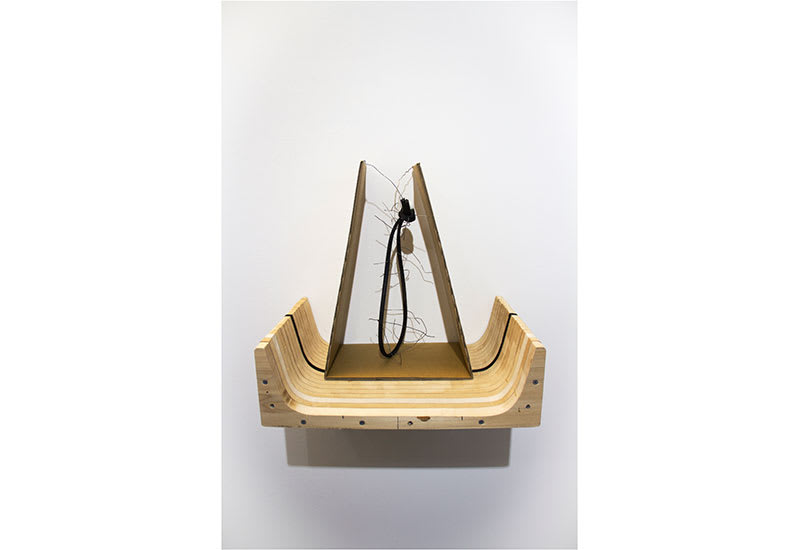
The cradle, 2019. Used wire from funeral tent and cardboard packaging; found wooden structure, rubber tubing, plastic knob; and acrylic paint. Approx. 17 6/8 x 12 6/8 x 16 1/2 inches.
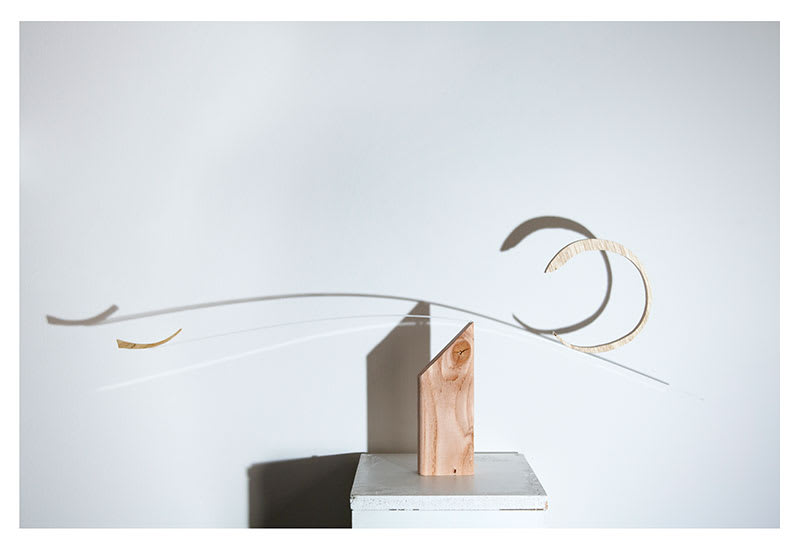
A possible way forward, 2018. Found wood, plastic and pedestal, and glue. Approx. 35 2/8 x 11/2 x 16 inches.
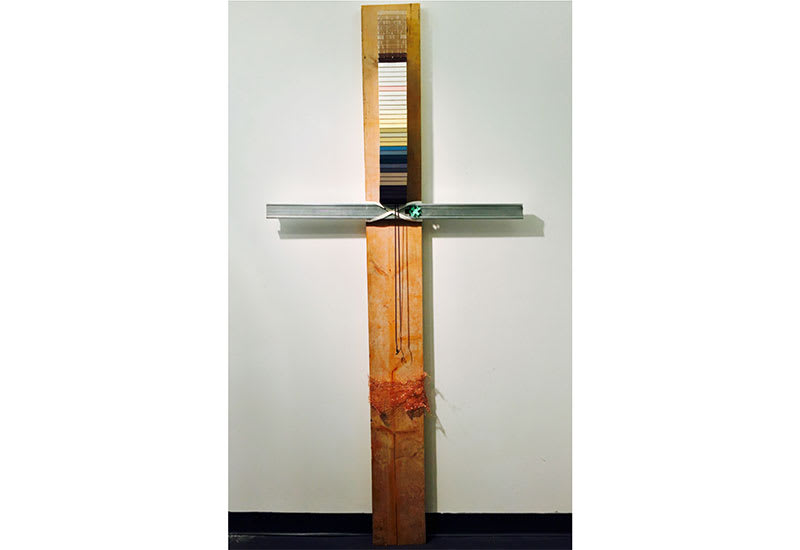
Hyperobject No. 1, 2018. Found plank, aluminum ventilation ducting, plastic packing strap, restroom towel roll end disc, cassette tape & case, copper scour pad, keychain flashlight, water. 89 2/8 X 411/8 X 3 3/8 inches.
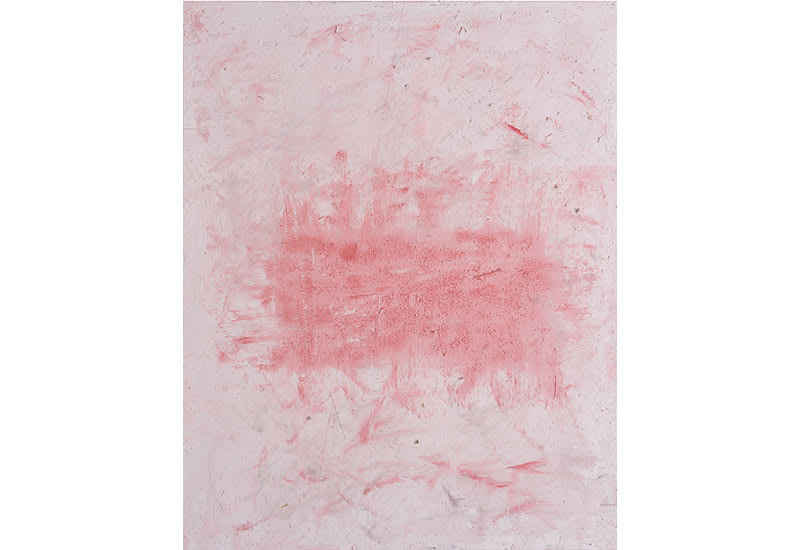
Threnody, 2016. Acrylic, flower, broomstick, copper & rayon on canvas 60 x 48 inches.
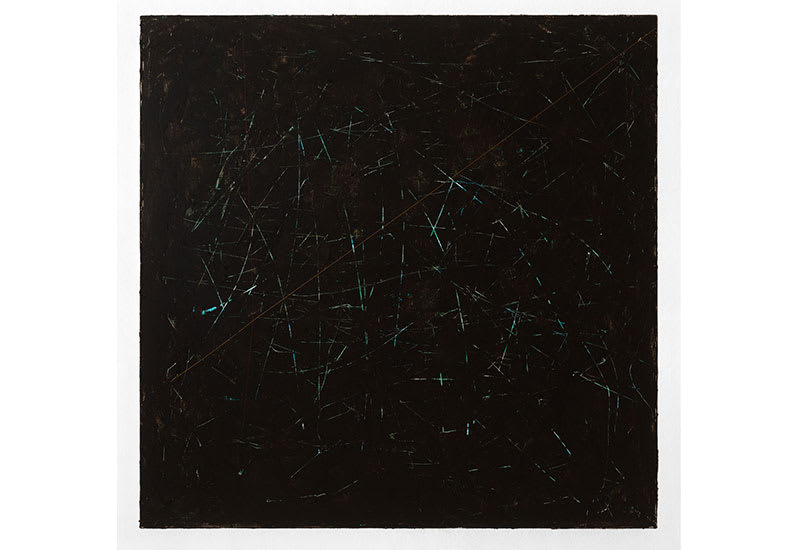
Penitence, 2015. Acrylic, flower & rayon on canvas. 36 x 36 inches.
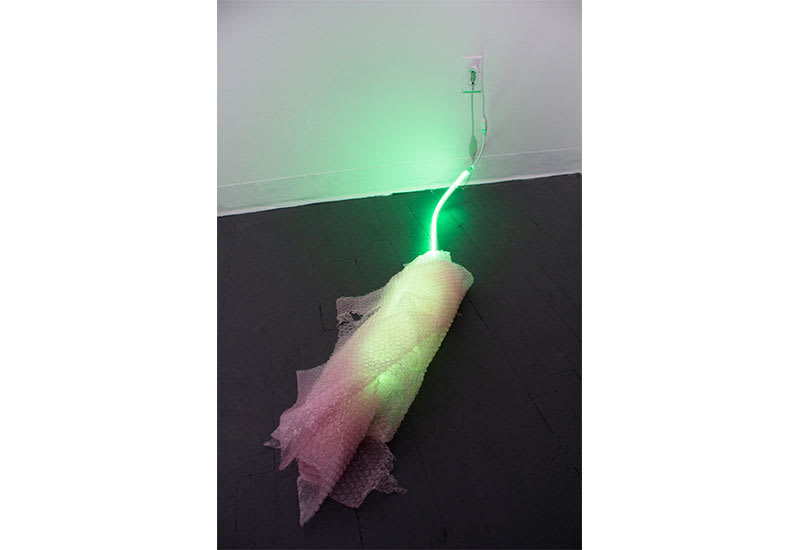
Skin and bone (detail), 2018. Used bubble wrap, and LED light tube. Approx. 62 x 12 x 5 inches.
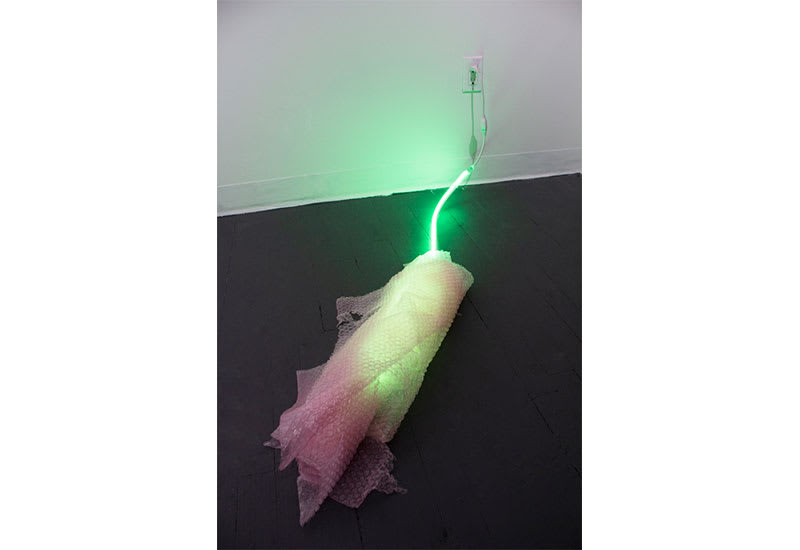
Skin and bone, 2018. Used bubble wrap, and LED light tube. Approx. 62 x 12 x 5 inches.
The artist Yam Chew Oh began creating sculptures using found objects while a Baltimore resident in 2017. Inspired by a humble upbringing in rural Singapore—as well as by his hard-working father, a karung guni man (what we would call a “junk man” in America), who Yam Chew accompanied on his salvaging missions as a child—his abiding fascination for reclaimed materials stems from that remembered past. He admired the agility with which his father would take something feeble and perishable and shape it into an object of eurhythmic utility.
Yam Chew’s own salvaged odds and ends were discovered on his daily commutes. Each of his works are composed of mundane materials, “readymades” in Duchampian terms. Wispy wire, soft glass, wood in the early stages of corrosion. Items that are thick with history and flooded over with memories. Consider a discarded umbrella whose only fault was a bent rib. How often had its nylon canopy kept its owner from the flashing rain, saving them from a sore throat or, worse, pneumonia? Did that umbrella feel the plash of foreign waters on its nylon skin? Did that forlorn thing deserve the trashcan because time had done its unknitting work? If I’m personifying this object it is because of the love I can imagine Yam Chew would bear for this umbrella. He maintains a profound affection for things that are unwanted and discarded. He sees great beauty in the overlooked urban detritus of the world.
What Yam Chew is concerned with in his abstract mediations is the fragility of life. How easy would it be to snuff out the flame in our hearts? We could be basking in the sunpour of an afternoon, minding our own business, and along comes a spider to craft its fangs in our skin and snatch away our lives. This speaks to the delicacy of the flesh, the flawed package with which we wrap up our spirits. Too suddenly, unready as we often are, our souls depart like moisture fleeing from glass, and we are introduced to the king and queen of infinite space.
Yam Chew’s work flies in the opposite direction of sculptors with a big-muscle sensibility, such as Richard Serra, whose massive walls of foreboding steel speak not so much to the ephemerality of life but to the hardiness and formidable qualities of the human engine. Serra, like another great sculptor in scrap metal, David Smith, built objects that were destined to last for centuries. Yam Chew, on the other hand, creates pieces that could fall apart depending upon how roughly the wind blew. He would have it no other way.
Take The Cradle (2019), a work based on a Chinese expression: “The white-haired person sends the black-haired person off.” This refers to every parent’s nightmare: the burial of one’s child. In this piece made from wire, wood, rubber tubing, a plastic knob, and acrylic paint, a figure resembling an insect is suspended from tendrils, not precisely captive but resigned to the power of what appears to be an open-fronted temple. The frame bears a talismanic force, which drains the tender, almost exhaustively leaning figure. A moving parable is at work, about the ties that closely bind us, and how the too-careful ministrations of parents could bar us from entering the unpredictable world at large.
Another piece, Skin and Bone (2018), has bubble wrap acting as a membranous container for what is presumably a weak lump of flesh, a creature in rupture, or a Cronenbergian monster rendered pitiful and neutral, reduced to a dragging absurdity, the neon green glow from an LED lamp the one sign of its soon-to-wane force. This describes a precarious existence, a situation also found in A Possible Way Forward (2019): a ring and a splinter, measured rough, rests uneasily upon soft Plexiglass, which in turn is balanced on a trapezoidal block of wood. It is a balancing act that bears with it the sense of danger—and the thrill of destruction. For most of us, reality outruns ambition; the game is over before the race is won. This is life lived on the beam: leave it to Yam Chew Oh to rock our fears, ever so gently.
Yam Chew Oh is a multidisciplinary artist, educator, and writer working in Baltimore and New York. His practice includes drawing, painting, sculpture, assemblage, and photography. His works and writings have been exhibited and published in the United States and Asia, and have been featured in Commotion, Lumina Journal, Studio Visit, and Velocity. Yam Chew has moved across the world 15 times — his works often reflect the places he has been, both physically and mentally. They contain personal stories and significant moments in time, drawn from his formative years in long-gone rural Singapore, familial history and relationships, an international education, and a multilingual/cultural background. A lover of the written word, Yam Chew also teaches freshman Writing and Literature at the School of Visual Arts in New York, where he earned his MFA. He is also Strategic Development & Interim Development Director for international curatorial-educational platform, Asia Contemporary Art Week.
Edwin Rivera is the Editor of The Match Factory and a Writing Instructor at the School of Visual Arts. His first play, In the Palace of the Planet King, was produced at the Wild Project theatre on May 9th, 2019, as part of the Downtown Urban Arts Festiva

